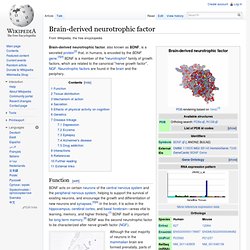

Seratonin: The chemistry of Well-Being. Glutamic acid. Dopamine. Dopamine (contracted from 3,4-dihydroxyphenethylamine) is a hormone (also known as Prolactin Inhibiting Hormone/Factor - PIH or PIF) and neurotransmitter of the catecholamine and phenethylamine families that plays a number of important roles in the human brain and body.

Its name derives from its chemical structure: it is an amine that is formed by removing a carboxyl group from a molecule of L-DOPA. In the brain, dopamine functions as a neurotransmitter—a chemical released by nerve cells to send signals to other nerve cells. The brain includes several distinct dopamine systems, one of which plays a major role in reward-motivated behavior. Most types of reward increase the level of dopamine in the brain, and a variety of addictive drugs increase dopamine neuronal activity.
Other brain dopamine systems are involved in motor control and in controlling the release of several other important hormones. A variety of important drugs work by altering the way the body makes or uses dopamine. Adenosine. Adenosine (ADO) is a purine nucleoside comprising a molecule of adenine attached to a ribose sugar molecule (ribofuranose) moiety via a β-N9-glycosidic bond.

Adenosine plays an important role in biochemical processes, such as energy transfer — as adenosine triphosphate (ATP) and adenosine diphosphate (ADP) — as well as in signal transduction as cyclic adenosine monophosphate, cAMP. It is also an inhibitory neurotransmitter, believed to play a role in promoting sleep and suppressing arousal. Adenosine also plays a role in regulation of blood flow to various organs through vasodilation.[1][2][3] Pharmacological effects[edit] Adenosine is an endogenous purine nucleoside that modulates many physiological processes.
In the USA, Adenosine is marketed as Adenocard. Adenosine receptors[edit] All adenosine receptor subtypes (A1, A2A, A2B, and A3) are seven-transmembrane-spanning G-protein-coupled receptors. Anti-inflammatory properties[edit] Action on the heart[edit] Action on the lungs[edit] Brain-derived neurotrophic factor. Brain-derived neurotrophic factor, also known as BDNF, is a secreted protein[2] that, in humans, is encoded by the BDNF gene.[3][4] BDNF is a member of the "neurotrophin" family of growth factors, which are related to the canonical "nerve growth factor", NGF.

Neurotrophic factors are found in the brain and the periphery. Function[edit] BDNF acts on certain neurons of the central nervous system and the peripheral nervous system, helping to support the survival of existing neurons, and encourage the growth and differentiation of new neurons and synapses.[5][6] In the brain, it is active in the hippocampus, cerebral cortex, and basal forebrain—areas vital to learning, memory, and higher thinking.[7] BDNF itself is important for long-term memory.[8] BDNF was the second neurotrophic factor to be characterized after nerve growth factor (NGF).
Tissue distribution[edit] Counterintuitively, BDNF is actually found in a range of tissue and cell types, not just in the brain. Mechanism of action[edit] Gamma-Aminobutyric acid. Γ-Aminobutyric acid (/ˈɡæmə əˈmiːnoʊbjuːˈtɪrɨk ˈæsɨd/; or GABA /ˈɡæbə/) is the chief inhibitory neurotransmitter in the mammalian central nervous system.

It plays a role in regulating neuronal excitability throughout the nervous system. In humans, GABA is also directly responsible for the regulation of muscle tone.[2] Although in chemical terms it is an amino acid, GABA is rarely referred to as such in the scientific or medical communities, because the term "amino acid," used without a qualifier, by convention refers to the alpha amino acids, which GABA is not, nor is it considered to be incorporated into proteins. In spastic diplegia in humans, GABA absorption becomes impaired by nerves damaged from the condition's upper motor neuron lesion, which leads to hypertonia of the muscles signaled by those nerves that can no longer absorb GABA. Function[edit] Neurotransmitter[edit] The production, release, action, and degradation of GABA at a stereotyped GABAergic synapse Brain development[edit]